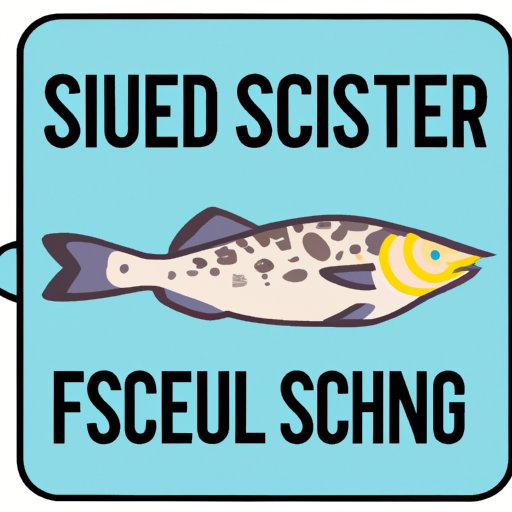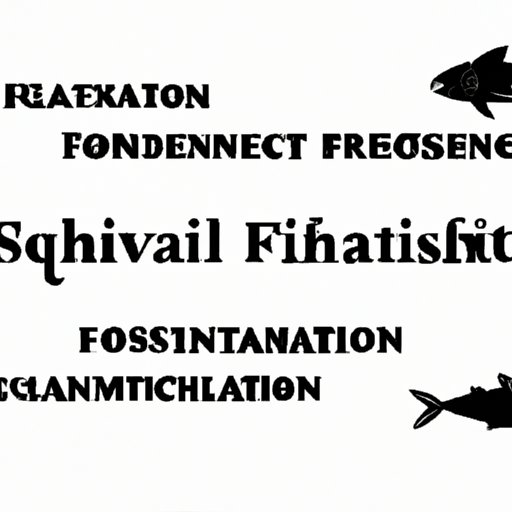Introduction
Overfishing is a serious global threat to marine ecosystems that is caused by humans catching fish faster than they can reproduce. It has been an ongoing problem for centuries, leading to depleted fish stocks, damaged coral reefs, and decreased biodiversity in the ocean. In order for us to protect our oceans and ensure its future health, we must take action to reduce overfishing and find sustainable solutions.
Strengthen Fishing Regulations and Enforcement
One of the most effective ways to reduce overfishing is to strengthen current fishing regulations and increase enforcement. Fisheries are regulated by governments and international organizations, such as the United Nations, who set quotas on the amount of fish that can be caught in a given year. These regulations are necessary to ensure that fish populations remain healthy and do not become overfished.
For example, in the United States, the Magnuson-Stevens Fishery Conservation and Management Act sets limits on how many fish can be caught each year and also requires fishermen to use certain types of fishing gear that reduce the impact on other species. Additionally, the U.S. government has implemented a system of marine reserves that are off-limits to commercial fishing, providing refuge for fish and other marine life.
Enforcement of these regulations is essential to ensure that they are being followed and that fisheries are managed sustainably. Governments should invest in monitoring and surveillance systems to detect illegal fishing activity and impose stricter penalties for violations. According to the World Bank, “Increased enforcement of existing rules and regulations is one of the most effective means of addressing overfishing.”
Limit Subsidies for Overfishing
Another key solution to reducing overfishing is to limit government subsidies that encourage fishing activities. Governments often provide subsidies to support the fishing industry, but these subsidies can lead to overfishing if they are not properly managed. For example, governments may provide subsidies for fuel or boats, which can make fishing more cost-effective and result in more fish being caught than necessary.
Subsidies have a direct impact on the health of fish stocks, as they create incentives for fishermen to catch more fish than is ecologically sustainable. According to a study published in the journal Science, “The elimination of fisheries subsidies could reduce global marine catches by up to 20%, thus helping to restore depleted fish stocks.”
To reduce overfishing, governments should limit subsidies and instead focus on investing in sustainable fishing practices. This could include providing funding for research into new fishing technologies or providing grants to fishermen to transition to more sustainable methods.
Increase Marine Protected Areas
Marine protected areas (MPAs) are designated areas in the ocean where fishing, mining, and other activities are restricted or prohibited. These areas act as sanctuaries for fish and other marine life, allowing them to reproduce and replenish their populations. MPAs can also serve as refuges for threatened species and provide habitats for other wildlife.
Increasing the number of MPAs is a critical step in reducing overfishing. A study published in the journal Nature found that “designated no-take areas can significantly reduce fishing pressure and substantially improve fish biomass and population abundances.” By setting aside more areas for protection, we can help rebuild fish populations and restore balance to our oceans.
Establishing MPAs can be challenging, as there is often resistance from local communities and fishing industries. Governments should work with stakeholders to develop strategies for designating and managing MPAs that are acceptable to all parties involved.

Educate Consumers on Sustainable Seafood Options
Consumers also have a role to play in reducing overfishing. Educating consumers about sustainable seafood options is an important part of this effort. Sustainable seafood is defined as seafood that is caught or farmed in a way that does not harm the environment or deplete fish stocks. By choosing sustainable seafood options, consumers can help to reduce overfishing and protect marine ecosystems.
To educate consumers about sustainable seafood, governments and NGOs should develop campaigns to raise awareness and promote sustainable seafood choices. These campaigns could include labeling seafood products with information about their source and sustainability, as well as providing resources and information about the importance of sustainable seafood.
Additionally, businesses should make an effort to increase the availability of sustainable seafood options. Restaurants and supermarkets should prioritize sourcing sustainable seafood and provide clear information to customers about their seafood choices.
Promote Aquaculture Practices
Aquaculture is another potential solution to reduce overfishing. Aquaculture is the farming of fish and other aquatic species in controlled environments, such as ponds or tanks. It has the potential to provide a sustainable source of seafood without depleting wild fish stocks. According to a report by the United Nations Food and Agriculture Organization, “Aquaculture can contribute significantly to food security, poverty alleviation and environmental protection.”
In order to promote aquaculture, governments should invest in research and development to improve the efficiency and sustainability of aquaculture practices. Additionally, businesses should be encouraged to adopt aquaculture practices, such as recirculating aquaculture systems, which can reduce water and energy use and reduce the environmental impacts of fish farming.

Support Research and Technology to Reduce Bycatch
Bycatch is another major issue associated with overfishing. Bycatch occurs when fishermen catch unintended species, such as dolphins, turtles, and sharks, while fishing for a particular species. This can have devastating effects on marine ecosystems, as bycatch can lead to the death of endangered species and the destruction of habitats.
To reduce bycatch, governments should invest in research and technology to develop more selective fishing gear. This could include using nets with larger mesh sizes to allow smaller fish to escape, or using acoustic devices to identify targeted species and avoid non-targeted species. Additionally, governments should fund research into using artificial intelligence and robotics to reduce bycatch.
Conclusion
Overfishing is a major global threat to marine ecosystems, but it is possible to reduce its impact through a variety of solutions. Strengthening fishing regulations and enforcement, limiting subsidies, increasing MPAs, educating consumers, promoting aquaculture, and supporting research and technology to reduce bycatch are all important steps toward restoring balance to our oceans. It is up to us to take action to protect our oceans and ensure its future health.
If we are to succeed in solving the overfishing problem, we must work together to implement these solutions on a global scale. Governments, businesses, and consumers must come together to make sustainable choices and create a brighter future for our oceans.
(Note: Is this article not meeting your expectations? Do you have knowledge or insights to share? Unlock new opportunities and expand your reach by joining our authors team. Click Registration to join us and share your expertise with our readers.)
